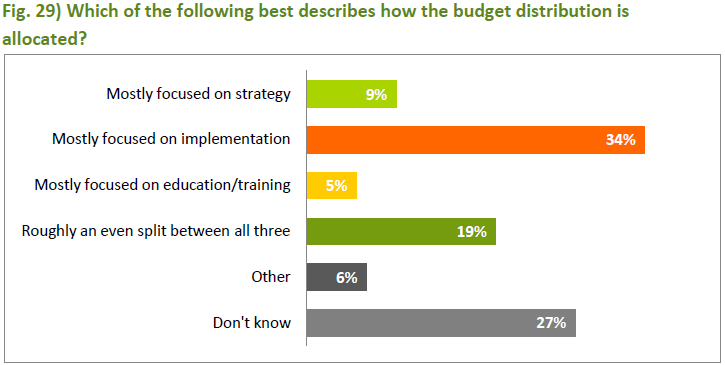When it comes to deploying a collaboration solution for the enterprise there are a lot of things to consider especially when it comes to budgets. Towards the end of the 2009 I wrote an article called, “Companies Interested in Enterprise 2.0 Need to Take Strategy Seriously,” which looked at data collected from a 2009 report on collaboration. What I found particularly shocking was the small budget allocation that strategy was receiving. Towards the end of 2011 Chess conducted another survey on the “State of Enterprise 2.0 Collaboration” and one of the topics we looked at was budget allocation.

Unfortunately not much has changed over the past few years and strategy is still receiving a smaller portion of the budget yet is perhaps the most important variable. Education and training really gets the short end of the stick though. Vendors keep pitching how simple to use and intuitive their platforms are and while simplicity and intuitiveness are important they by no means negate the importance of education and training. The problem here is that buyers equate educate education and training to being purely about the technology and if the vendor says it’s so easy to use that no training is required then the buyer assumes that’s actually the case. However, training and education isn’t just about the technology it is also about the people. Employees not only need to understand the technologies they use but also the business cases of why they are being asked to use these tools and how impacts them personally. Getting over a competitive or silo-ed mentality is also crucial in the education and training process. So, one way or the other, training and education is still important BOTH from a technology standpoint and from a business and people standpoint.
Something else to note is the large number of respondents who didn’t know how the budgets were being allocated. When it comes to budgets things can get a bit murky, especially at large organizations. However, companies need to work harder to understand where the money is going for these initiatives. For example, a good starting point for this discussion can look at the following variables:
- technology costs
- training and education costs
- integration costs
- internal marketing costs
- support costs
These costs then be mapped out on a either a monthly or quarterly basis to have an understanding of where money is being spent. It’s not always easy to get an exact number for all of these things which is understandable especially in large enterprises, however a rough idea will allow you to adjust spending as needed.
I still find the budget allocation being spent on technology to be far to high, however I also understand that many vendors are not cheap which is why these budgets are so technology focused. But then again, many companies do complain of low adoption or minimal adoption as well so the overall cost of their deploying something that isn’t used is far greater then spending more money upfront and putting together a solid strategy in place.
Technology is great but it needs a strategy to succeed.
Comments